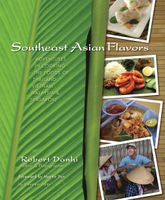Prue Leith's latest book is now on ckbk. Get 25% off ckbk Membership
Fresh Coconut Milk
By Robert Danhi
Published 2008
(please see for detailed preparation technique). There are two distinct types of coconut milk: thick and thin. They come from different stages of the same process, just as extra-virgin and regular olive oil come from different pressings of the same olives. Thick coconut milk is prepared by combining shredded coconut with warm water, massaging or blending the mixture, and then squeezing it to expel thick coconut milk. This process is repeated with new water to produce a second flush, which is the thin coconut milk. Generally, thin coconut milk is used for simmering, and the thicker, richer coconut milk is added at the end of the cooking process. Again, the similarities to olive oil are significant: Italians generally cook with second-pressing olive oil and finish dishes with extra-virgin, first-pressing oil. There are exceptions. Thai cooks use thick coconut milk to start some of their curries. They boil it until the coconut milk separates (“breaks,” in cook’s jargon) to yield pure coconut oil. Curry paste is roasted in this oil, and thin coconut milk is added later to stew the curry ingredients. Additional thick coconut milk may be added at the end to reinforce the rich coconut flavor.
Become a Premium Member to access this page
Unlimited, ad-free access to hundreds of the world’s best cookbooks
Over 150,000 recipes with thousands more added every month
Recommended by leading chefs and food writers
Powerful search filters to match your tastes
Create collections and add reviews or private notes to any recipe
Swipe to browse each cookbook from cover-to-cover
Manage your subscription via the My Membership page
Part of
Advertisement
Related Recipes
-
-
-
-
Related Reference
-
-
-
-
Advertisement



